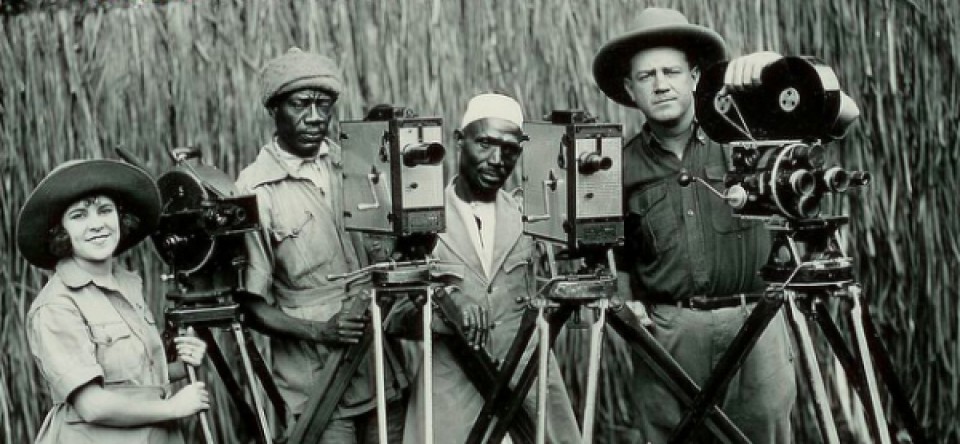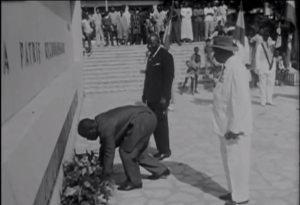My post will be an extension of Ondrea’s observations on the gendering of oppression in La Noire De. In her post, she argues that deferment of oppression to the woman demonstrates how exploitation can come from the most unexpected or innocent sources. In this post, I will be emphasising the gendering of spaces in the film and how this reveals the extent of the coloured woman’s oppression.
First, it is important to take note that instances of oppression and racism in the film take place only within domestic spaces. Though we know that undercurrents of racism and post-colonial tensions course through the film, the director only chooses to address them directly within the domestic sphere, aka Madame and Monsieur’s home. At the road corner where she was hired, Madame was civil and her racial prejudices were not yet revealed. Before Diouana moves into the house, we are told that Madame gifted her with clothes and shoes. It is only in the house where Madame, Monsieur and their friends reveal their racial superiority and oppress her.
This is significant when we realise that it is only women who wield power in the domestic sphere. The film genders power in spaces quite clearly: In the official ceremony/commemoration taking place in Dhaka, only men are in the foreground. Diouana is the only female character in focus during that scene, and her boyfriend repeatedly shouts at her to come down from the parapet. She is portrayed as childish and out-of-place in the midst of a sombre event. Her physical displacement can be read as a metaphor for women’s lack of place and power in the public sphere.
On the contrary, the woman’s dominion is at home. There are 3 instances that prove this:
- Madame runs the household, she makes all the decisions and is the main figure of oppression
- While Diouana’s boyfriend orders her to come down from the parapet in public, she has him wrapped around her finger in his room when she seduces him
- It is Diouana’s mother, not her father, that Monsieur is accountable to when he returns to her home in Dhaka with her belongings.
So how does this affect our analysis of Diouana’s oppression? The gendering of power in spaces allows us to see that her oppression happens on 2 levels – race and gender.
Diouana is part of a larger system in which she is at the very bottom of the totem pole. As a coloured person, she is oppressed because of reasons (too long to describe them here, but I’m sure we’re all familiar by now why people of colour are discriminated against.) As a woman, she is doubly oppressed by a patriarchal society at large. Sangeetha Thanapal explains this relationship between gender and racism very well in an interview regarding Chinese privilege in sg, I recommend all of you read it here. Simone de Beauvoir famously said: “Women do not see ‘We'”. Women do not have solidarity because they surrender their individual agency for the protection and benefits provided by their race. As a result, women of colour are doubly othered, by default of their gender and the perceived inferiority of their race.
To conclude, the gendering of spaces in Le Noire De introduces gender and racial dynamics that reveal the extent of a coloured woman’s oppression. So many mainstream films about black oppression feature men as central characters (e.g 12 Years a Slave, Blood Diamond), when it is really the women who are the greatest victims. If any of you are interested in gender and racial oppression from the coloured woman’s perspective, do give The Help (2011), For Colored Girls (2010) and Maya Angelou’s “I Know Why the Caged Bird Sings” some of your time.

